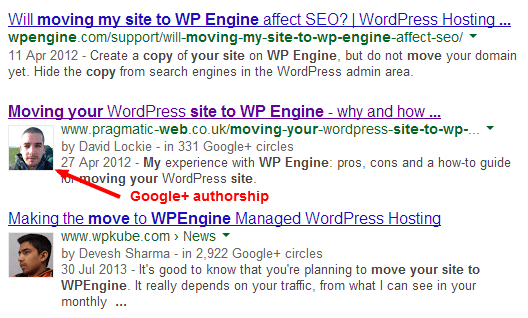
Social media is everywhere you look online now. From Facebook like buttons and Twitter feeds on websites to corporate Pinterest pages, it’s rare to find any website that doesn’t integrate with social media in some way.
The good news is that it’s easier to integrate social media into your WordPress site than almost any other platform. There are hundreds of social media plugins – so what are your options when it comes to integrating social media into your WordPress site?
Here at Angry Creative, we generally consider there to be seven core social media integrations.
1. Sharing buttons

Allowing visitors to share your content by using the ubiquitous ‘Like’ and ‘Tweet’ buttons can help spread your message far and wide. It’s important to pick a selection of buttons that matches your social media properties and audience. Business-oriented websites might choose LinkedIn and Google+ share buttons, whereas consumer-focussed websites will probably find more of their audience use Facebook and Pinterest.
Whilst it’s certainly possible to integrated social media sharing buttons using the individual codes provided by each social media platform, that’s often a laborious way of doing things. AddThis is a social sharing service that makes it quick and easy to implement social sharing buttons on your website, but also offers combined analytics about on-site sharing and sophisticated-but-easy-to-use, advanced configuration options. There are other options – JetPack also provides easy-to-add share buttons.
2. Following
Users spend most of their time on other sites.
Jakob’s Law of the Internet User Experience
Encourage your visitors to follow your activity and find your content on social media sites such as Twitter, FaceBook or Tumblr. Only the most devoted of your fans will come back to your website regularly to see what’s new. By creating a social media connection, you can keep your brand and messages in front of far more of your visitors than through your website alone.
3. Syndication
Social media syndication means automatically posting your website’s content out to social media properties so that visitors can keep up-to-date with your activities through their favourite social media channel. Usually you would syndicate your dynamic content (news, blog posts, case studies and the like) rather than your static pages because that’s what’s timely, interesting and relevant (the three cornerstones of a successful website content strategy). There are a few options to power syndication on your WordPress site using WordPress plugins or 3rd party services. We’re always happy to look at your specific requirements to work out what the most appropriate method is for you.
Some tools also let you syndicate content that your visitors generate (such as comments) too – for example sharing Facebook comments and likes on your website back out to your Facebook page, or allowing people to tweet their comment.
4. Including
Embedding social media content from your social media channels on your website can help to keep your site fresh and interesting. Some common examples include bringing in latest tweets via a widget, a slideshow of your latest photos from Instagram or videos from your YouTube channel.
We think that one of the most effective ways to integrate social media into your website is to make sure it’s contextual. So, for example if you’re writing a case study about a project you’ve completed, what better and more credible way to demonstrate your client’s satisfaction than by embedding a tweet from the client saying how pleased there are?
Doesn’t that tell the story better than we ever could?
5. Signing in and commenting

Research shows that integrating social media with your website drives engagement. That can be particularly obvious whenever you ask visitors to register with your site (perhaps to download a file or access a certain protected page) or submit their details in order to leave a comment. People get password fatigue and the general perception is that registering with websites isn’t much fun. Frankly we’d agree. So allowing visitors to click a button and sign in with Facebook, Twitter or Google can make that process far more appealing and therefore drive commenting and general engagement with your website.
6. Sharing optimisation
We’ve already talked about adding social media sharing buttons to your WordPress site, but there’s another level to this. How do you make sure that when your content is shared that it looks as good as possible on Facebook or Twitter? You know how sometimes you paste a URL into Facebook or add a Pin to Pinterest, the site seems to find a perfect thumbnail image and intro text? That’s down to optimisation for social media sharing. This is a bit more technical than the other aspects we’ve covered so far.
For example, Facebook and Pinterest both provide hidden markup that optimises web pages to be shared on their platforms – including specifying images and introductory text as mentioned above. Facebook’s system is called OpenGraph. It’s seamless from your perspective as a website owner and non-visible to visitors but when content is shared, it makes a big difference.
7. Google+ authorship
When you search Google, you’ve probably noticed that some search results have an author associated with them. This helps give authority to the search result and makes the listing stand out. It’s simple to achieve using standard WordPress plugins and we’d definitely recommend it. You’ll need a Google+ page – just send us the link!
In Summary
There’s real value to integrating social media with your WordPress site. In this article, we’ve tried to cover the major integrations that are possible and look at some of the benefits and options for achieving them. Some major plugins will provide many or all of these options right from one plugin (such as Facebook), others require a combination approach. Whether you’re planning a brand new site or just an upgrade to your current site, we’re always happy to talk through your options and recommend a strategy. Start by booking a meeting and let’s talk through what you want to achieve!
Curious about how visitors find and interact with your WordPress site? Dive into our comprehensive guide on visitors, traffic sources, and engagement for WordPress sites to learn how to boost your site’s performance and understand your audience better.
You may also be interested in these articles
Brexit for WooCommerce sellers
The impact of Brexit is huge. There are very many implications for those in e-commerce businesses…
Read more
Brexit for WooCommerce sellers
Cynefin: a valuable framework to classify, communicate and respond to tasks in digital projects
Cynefin. At Angry Creative we think it’s a vital part of digital projects. It helps us to underst…
Read more
Cynefin: a valuable framework to classify, communicate and respond to tasks in digital projects
Web fonts for WordPress
Fonts control how your text is displayed – how the letters actually look. web-safe fonts. W…
Read more
Web fonts for WordPress
Subscribe to our newsletter for tips, inspiration and insight about WordPress and WooCommerce and the digital world beyond.
Time to take the next step towards a more effective website?
Contact us, and we can talk more about how we can take your business to the next level together.
